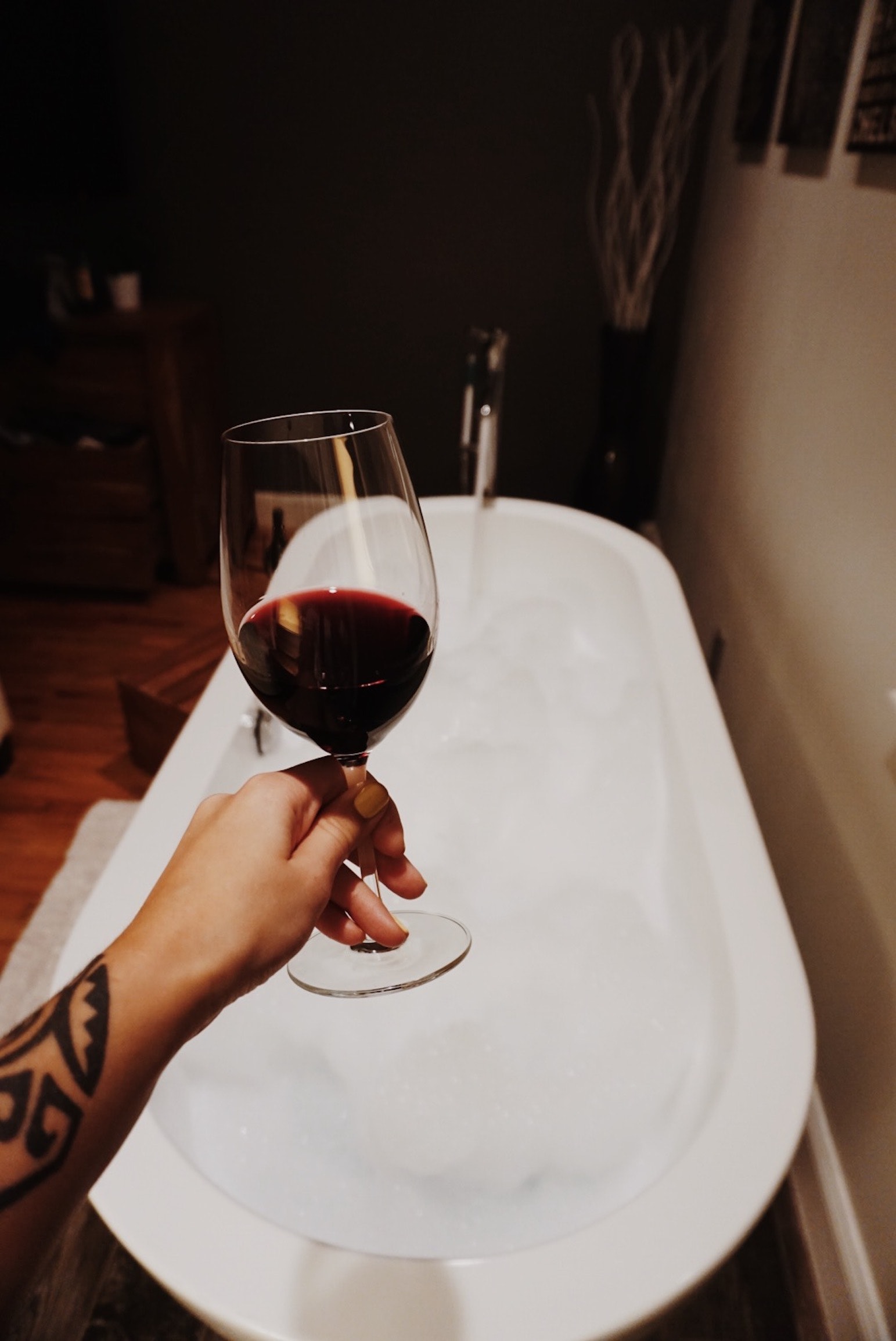Microsoft and Steelcase announced their newest co-development on April 17, 2019: The Steelcase® Roam™ for the Microsoft Surface Hub 2S. I was fortunate enough to attend an exclusive press event at the Steelcase Showroom in NYC where I spoke with executives from both companies about what this means in regard to the employee experience, especially in terms of collaboration, productivity, and wellness for individual employees and teams alike.
Wellness has become a topic of conversation in the workplace more so in recent years than ever before. But what exactly does it mean? Competitive pay, health insurance, and a fully stocked kitchen?
No. Employee well-being goes beyond benefits and bagels on Friday mornings. It’s ensuring everybody has what they need in order to perform their job to the best of their ability during every shift. This includes access to the right tools to support you while working on your own and as a team. It also requires a progressive and inclusive office culture that is fostered by company decision-makers.
As a wellness writer and a former project manager at a software and mobile app development company, attending Microsoft and Steelcase’s #WorkYourWay event was the perfect opportunity to explore the intersection of these two topics:
How exactly does technology and space tie into the employee (human) experience, and how can we use these innovations to promote a better sense of well-being in the office?
“For workplaces to evolve, there are really three things at play: people, technology, and process,” says Robin Seiler, General Manager of Microsoft Devices. “Most companies say, ‘I will spend money, and I will put new technology in, and that will create a happy, healthy environment.’ The reality is the hardest factor to change is people. It’s culture, and it starts with culture. What is the culture that you want to establish in your company? And how are your process and technology going to support it?”
According to Steelcase’s study on team-based work, there are five main reasons why teams struggle to collaborate:
- New work, old office
- No place to call home
- Lack of control
- Ideas get stuck
- Technology barriers
97% of people say that collaboration is important for creating ideas, developing solutions, and gathering different viewpoints. However, most office environments do not support active collaboration. For example, 69% of people want access to an interactive whiteboard or smartboard, whereas only 40% of people have it.
“When companies want to change, some [companies] waste money by simply trying to put in technology that their culture doesn’t support. And you see it when you walk into a conference room that has a Microsoft Surface Hub at one end but has a conference room table jammed up against that Hub so nobody would ever stand in front of it,” Seiler adds. “Through culture, they are not supporting the technology. The two have to be intertwined.”
Technology is constantly evolving at a rapid pace, but it shouldn’t impede progress or cause frustration at work. The tools we use should be designed and utilized in an effort to optimize our work processes and reduce the stresses associated with completing our everyday tasks.
During my time at the event, I was able to experience firsthand how Microsoft and Steelcase are eliminating these barriers to promote employee wellness — by combining technology and space to create a work environment that better supports any time, anywhere, any way collaboration. How are they achieving this goal?
Introducing The Steelcase® Roam™ for the Microsoft Surface Hub 2S

Microsoft and Steelcase joined forces in 2017 under a shared mission: to improve the way people work. Two years and several innovations later, the two have announced their newest co-development: The Steelcase® Roam™ for the Microsoft Surface Hub 2S.
Both developments work together to support active collaboration by encouraging physical activity, which promotes better cognitive ability and emotional engagement. Through the use of the Surface Hub 2S and Roam™, teams gain a true sense of shared-purpose collaboration.
“Surface Hub gets people working differently—not technology,” Seiler says. “It’s the ability for people to stand around [the Hub] and have a conversation. Once you establish the culture, then you can use the process to support the evolutionary change that you want to make. And that’s the reinforcing point.”
The Steelcase® Roam™ was designed to host the Surface Hub and support the physical activity that promotes creativity. The mobile stand can be rolled across rooms to ensure people, too, are moving around and gaining as much creative power through that movement, in the healthiest environment possible.
Behind-the-scenes product tours
David Cooper, product category manager for Flex, showed me a few products within Steelcase’s new Flex Collection, including a super cool, height-adjustable desk that syncs with the Steelcase Rise app. Syncing the desk with the smartphone app promotes personal wellness in a few ways, including a vibrating reminder (that isn’t loud enough to disrupt your coworkers) to adjust your posture.

Seiler was also kind enough to pull me away from the main event space to “geek out” on a personal hardware and software tour. Aside from fangirling over the coolest tech I’ve ever seen up close, I saw how Microsoft’s product development is truly linked to, and based upon, the human experience. It’s the little things that make all the difference, like the Hub’s ergonomically conscious 10° handwriting angle or the Flex desk’s subtle vibrating reminder to sit or stand up taller. However, we as consumers often look past the amount of time, research, and data that drives a brand’s design decisions and how those decisions directly tie into our overall satisfaction with their products. I realized how guilty I was of that while getting lost in the details of this hardware and software.

What does employee wellness look like across different workspaces?
Workplace wellness transcends beyond tech and space, especially for those whose “office” isn’t necessarily in one set location. Remote employees require a different type of accessibility, but similar principles still apply. Although the settings may differ, our wellbeing at work fundamentally boils down to how we work, including what enables us to complete our job as efficiently and accessible as possible.
Based on my experience at the #WorkYourWay event, I believe that employee well-being ultimately consists of four key components:
- Collaboration
- Convenience
- Creativity
- Personal Wellness
Contrary to what the title conveys, an independent contractor’s job is oftentimes still extremely collaborative and includes interacting with others in some capacity. Personally, as a freelance writer, my success depends upon the reliability of the software I use to create content and communicate with clients every day. For freelance photographer Reid Rolls, his “employee” experience requires a battery that lasts long enough to conduct a shoot uninterrupted by the technology he relies on. After using Apple products for 20 years, Rolls took his Microsoft Surface Pro on a photoshoot the day before the press event. “I never once had to charge it, and the battery lasted the whole time,” he whispers in between snapping professional headshots for attendees, almost as if Apple was eavesdropping on our conversation. “It’s kind of amazing. I couldn’t believe it.”
While Brooklyn-based freelance illustrator Laura Supnik drew my portrait, we talked about what it’s like for her to freelance for a living. She mentioned how different tablets offer different creative experiences, but the conversation mainly revolved around how our own jobs cater to our personal well-being. Streamlined organization, productivity, connection, and an environment that fosters creativity all play vital roles in both of our wellness experiences, but the ability to work on our own terms at any time or any place while continuing to do what we love for a living is priceless – and that’s what makes our jobs worthwhile.
According to Sara Armbruster, Vice President of Strategy, Research, and Digital Transformation for Steelcase, “employee well-being is physical, emotional, and cognitive.” And I completely agree. No matter where we work and what we do, our jobs must support positive mental, emotional, and physical health.
Yes, the products we use and the space in which we work directly impact our employee experience and thus our personal well-being. So how do you ensure that team members are properly taken care of? How do you know if you’re creating an environment which promotes a sense of wellness for your employees?
Integration is key to supporting a happy, healthy working environment.
It’s one thing to say you care about your employees, but how do you actively integrate this into your company’s everyday practices? Why invest in new chairs when you have functional ones? Why buy a new desk that rises and vibrates and syncs with an app when everyone already has their own desk?
Because employers must integrate the availability of options in the office so team members have the freedom to choose what is best for them in order to thrive in their work environment. “We don’t all operate the same way,” Armbruster said. “We all know what we need. We know what’s best for us, so we need options.”
At the end of the day, employees are people, and people have different needs. Integrating wellness-inspired tech and space innovations that specifically cater to the human experience will result in happier, healthier employees. By supporting the mental, emotional, and physical health of individual team members, you are ultimately supporting the betterment of the team and company as a whole. So does this mean there’s actually an “i” in team? Literally, no. Metaphorically, yes. If individuals aren’t working in an atmosphere that’s conducive to them feeling their best then their work and the companies they work for won’t thrive either.
If this insight is any indication of the future of work and how Microsoft and Steelcase are working to transform it, then we should all anticipate seeing some truly exciting workspace integrations within offices across the globe in the near future.
How does your office support personal creativity and team collaboration? What does wellness in the workplace mean to you? Share your thoughts in the comments below.
Featured Image Credit: Steelcase
We may receive a commission if you make a purchase after clicking links on this page, but we promise that we only promote products we love! Plus, you may score a discount, and buying from our links is a great way to show your love and support for our content. ?




